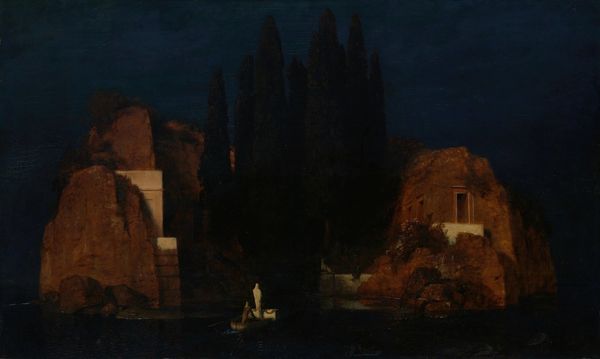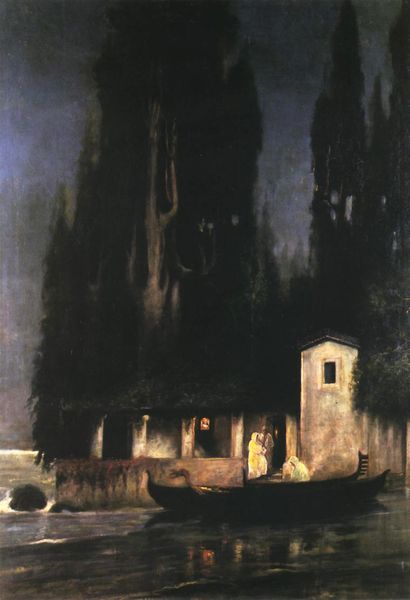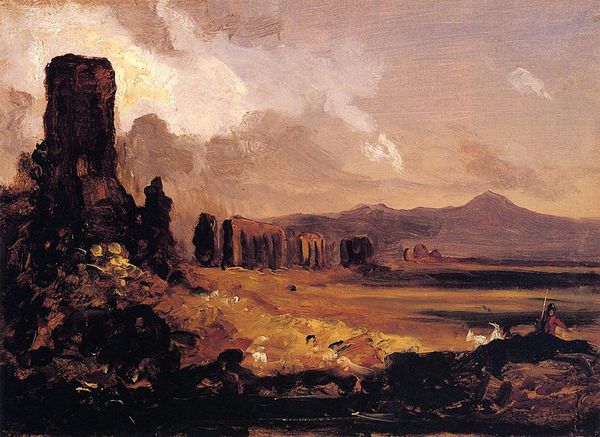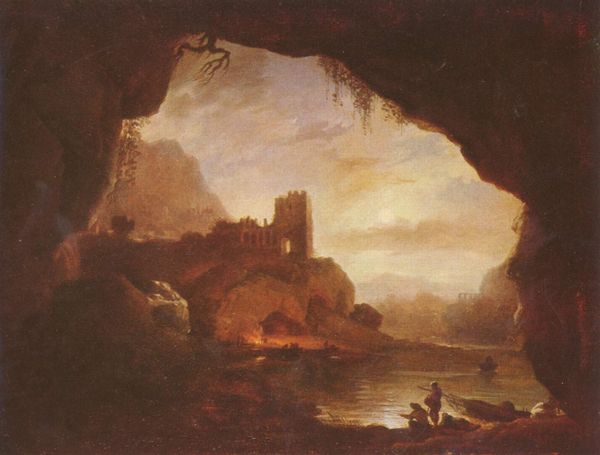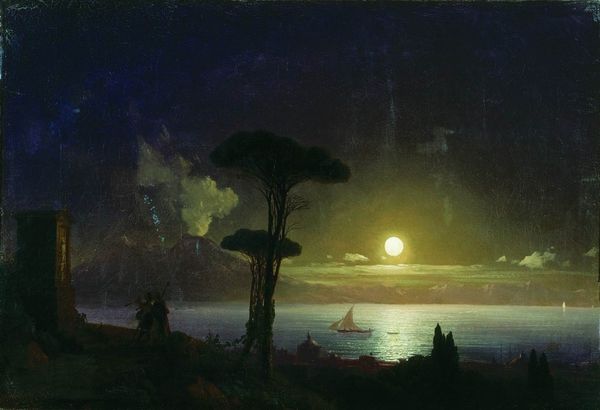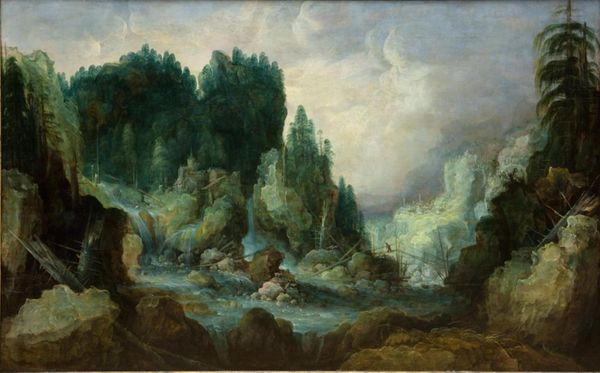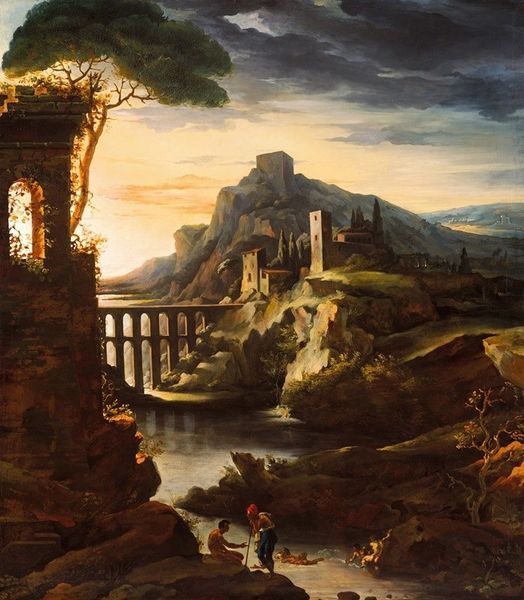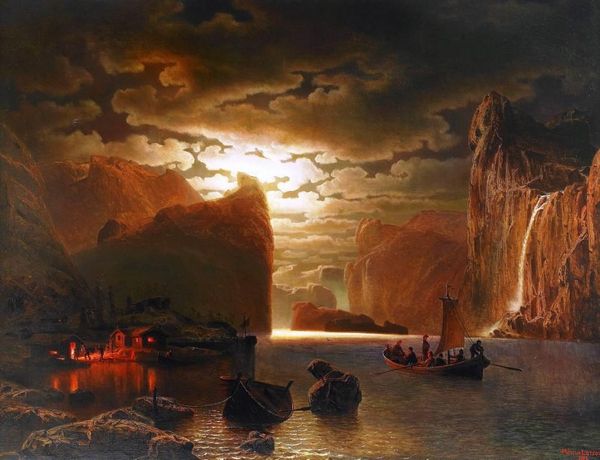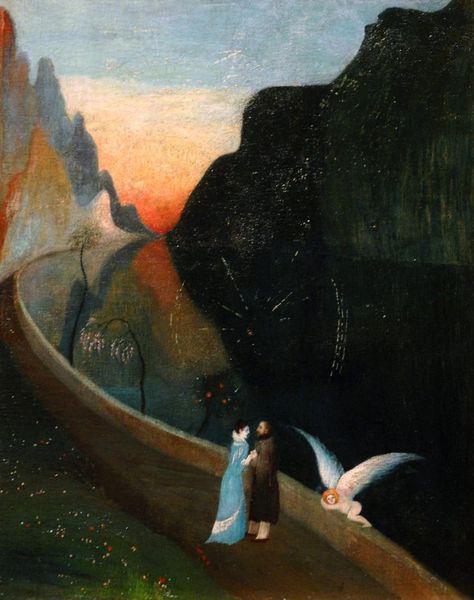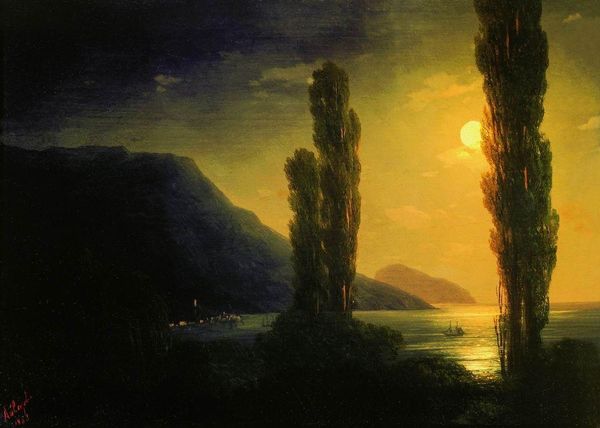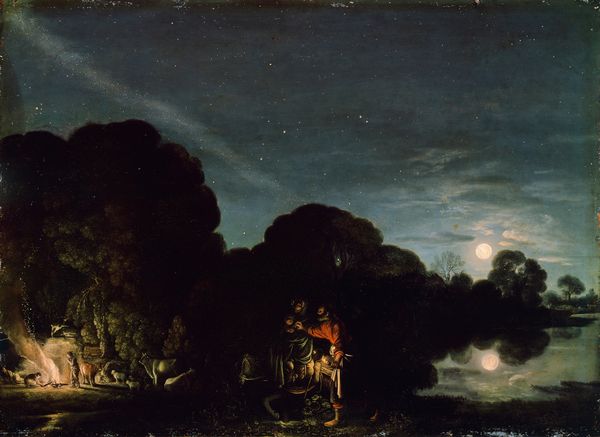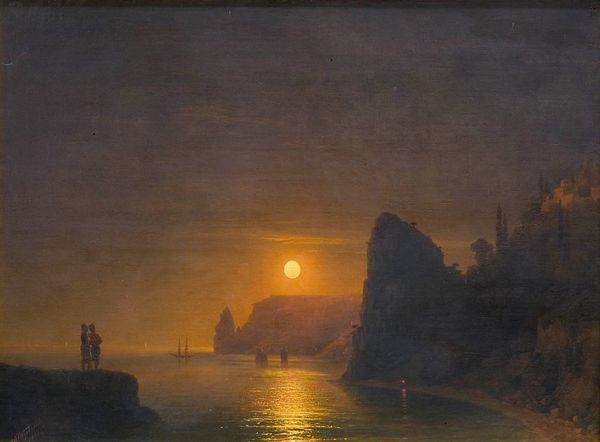
Dimensions: 155 x 111 cm
Copyright: Public domain
Curator: Looking at Arnold Böcklin's "The Isle of the Dead," painted in 1880, one immediately feels a profound sense of isolation. The color is hauntingly murky and dense, even considering the effects achieved with oil paints. What’s your take? Editor: My first impression is how meticulously the painting highlights labor invested in making this scenery happen; the sheer effort behind hewn stone juxtaposed to wild nature screams production! It seems a critique, or at least an observation, on industrialism in its social context, where everything is shaped. Curator: That’s a fascinating angle. Art production certainly reflects its era. However, Böcklin intended to visualize death as a journey. Notice how he strategically utilizes the painting as an opportunity to depict that journey in his role within the artistic canon. Its popularity really boomed during a period where artwork, particularly allegorical landscapes, started serving public grieving processes. Editor: The material aspect of the landscape still speaks volumes to me. How those fabricated architectural interventions have altered nature… those sculpted tombs rising out of rock, they stand to highlight how artistic intervention physically shapes ideologies surrounding death within society. I am drawn into this power struggle. Curator: Exactly. The tombs act as physical markers but what about the institutional influence on how we view works such as these today? How the paintings serve as both personal reflections, but at the same time, how they are then commodified within an industry. It really showcases a specific public understanding of both grief, but also aesthetic preferences during that era. Editor: Böcklin's methods also make this interesting. Look closely at the textural difference, between smooth, polished surfaces versus the rough, raw stone. Doesn’t that just symbolize, perhaps unconsciously, our impulse for imposing human-created systems onto elemental chaos, a power that can be acquired or produced by anyone, not only a painter or the industry surrounding them? Curator: So, the interplay of textures and its ability to allow viewers an invitation to access universal ideas about power and imposing systems, I like that insight. It moves beyond pure biographical detail into this bigger public dialogue. Editor: Absolutely. Considering materials, we could see how painting allows the industrializing world a possibility of imposing its system on uncontrollable nature via labor; in some sense, these painted tombs offer more durable memorials than stone or memory could create, for a modern industrialized public, thus highlighting power distribution by making that immortality broadly available and shaped by society at large. Curator: A compelling point. It reminds us that art exists both within personal and wider historical narratives. Editor: Right! Examining how labor and materials intersect with personal expression to address larger sociopolitical and cultural issues adds many new insights, ultimately expanding possibilities.
Comments
No comments
Be the first to comment and join the conversation on the ultimate creative platform.
